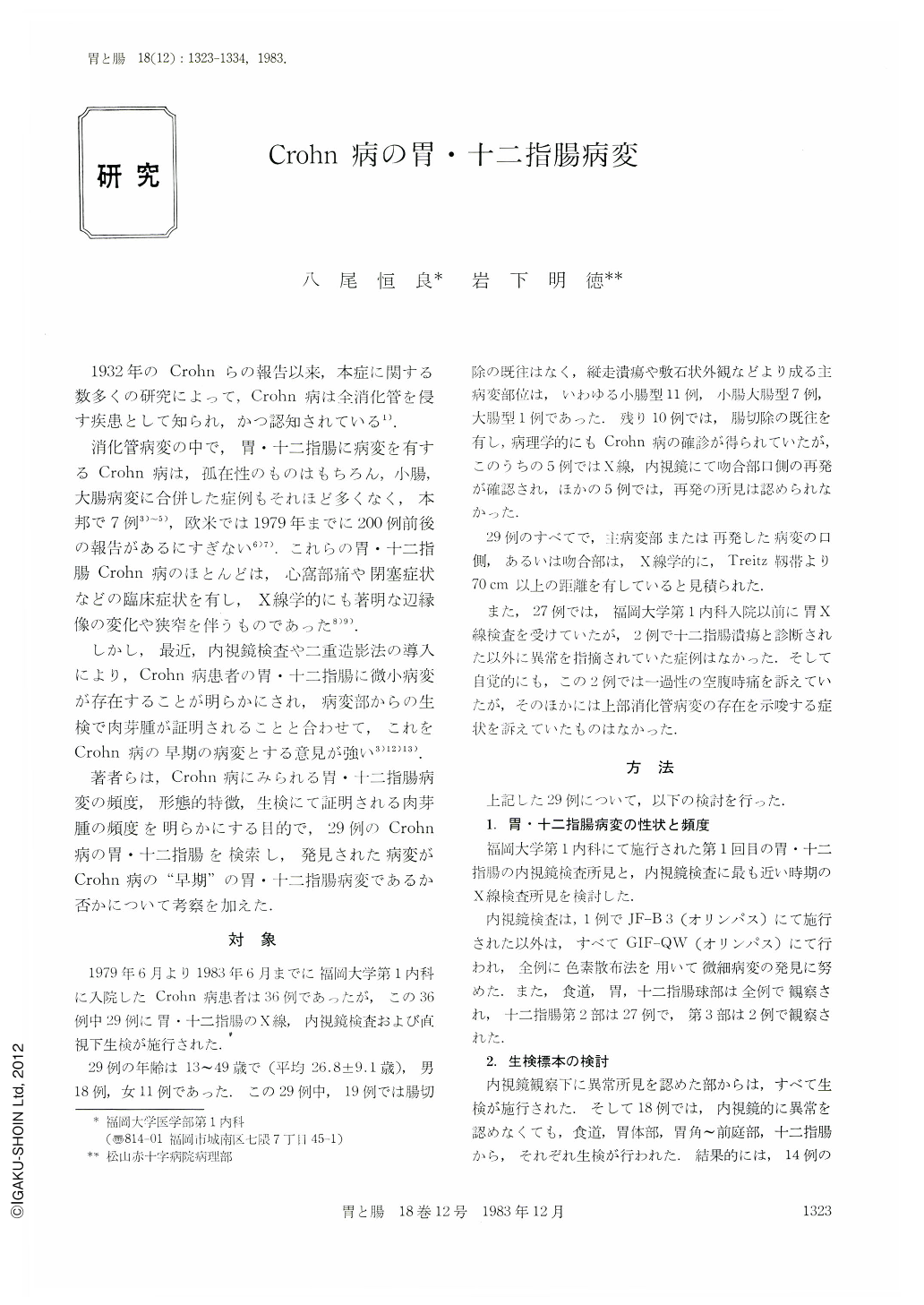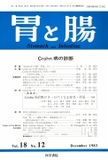Japanese
English
- 有料閲覧
- Abstract 文献概要
- 1ページ目 Look Inside
- サイト内被引用 Cited by
1932年のCrohnらの報告以来,本症に関する数多くの研究によって,Crohn病は全消化管を侵す疾患として知られ,かつ認知されている1).
消化管病変の中で,胃・十二指腸に病変を有するCrohn病は,孤在性のものはもちろん,小腸,大腸病変に合併した症例もそれほど多くなく,本邦で7例3)~5),欧米では1979年までに200例前後の報告があるにすぎない6)7).これらの胃・十二指腸Crohn病のほとんどは,心窩部痛や閉塞症状などの臨床症状を有し,X線学的にも著明な辺縁像の変化や狭窄を伴うものであった8)9).
Twenty-nine patients with Crohn's disease were studied. Roentgenographic and endoscopic examination of the stomach and duodenum, and endoscopic biopsy were performed in all of the patients. Microscopic examination of biopsy specimens was done in a double blind method. Biopsy specimens taken from 30 cases with gastric and/or duodenal erosions were used for control.
Results obtained were as follows:
1) Roentgenographic and endoscopic findings:
In the stomach flat type or verrucous type of erosions were found in 26 cases (89.7%). As for the duodenum, 17 of 29 cases (58.6%) and 17 of 27 cases (63.0%) had lesions in the bulb and in the second portion, respectively. The duodenal lesions they had were, except for peptic ulcer seen in five patients, quite characteristic abnormalities which may not be found in other diseases, i.e., cobblestone appearance, solitary or multiple polyps, fine granules, irregular mucosal pattern, and active or healed erosions in the second purlion.
2) Histological findings of biopsy specimens:
On conventional sections 11 patients (37.9%) had a epithelioid cell granuloma and 6 cases (20.7%) had a granulomatous lesion (epithelioid cell clusler and/or giant cell). There was no case in control who had a granuloma or a granulomatous lesion. Further histological study on 60 serial sections revealed 20 patients with a granuloma (69.0%), and 4 with a granulomatous lesion (13.8%). In addition through the follow up of five cases in whom neither a granuloma nor a granulomatous lesion was found, a granuloma was newly detected in two patients. Accordingly, there were 22 patients (75.9%) who had a granuloma, and furthermore, as many as 26 out of 29 patients (89.7%) had a granuloma and/or a granulomatous lesion.
Those results indicate the high frequency of upper gastrointestinal involvement of Crohn's disease. Taking it into account that a granuloma was found from normal appearing rectal mucosa, Crohn's disease may be a disorder having total gastrointestinal involvement.

Copyright © 1983, Igaku-Shoin Ltd. All rights reserved.


